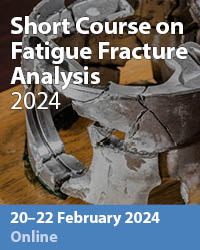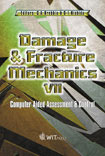The Modified Fatigue Crack Closure Concept: Further Modeling And Evaluation
Price
Free (open access)
Transaction
Volume
37
Pages
Published
2002
Size
422 kb
Paper DOI
10.2495/DM020201
Copyright
WIT Press
Author(s)
A Varvani-Farahani & D L Chen
Abstract
The present study is aimed at evaluating the previously-modified crack closure concept, in which the role of cyclic loading portion below the opening stress intensity factor Kop, has been taken into account, by comparison with an earlier developed crack opening stress model as a function of the maximum and minimum cyclic stresses and material-dependent parameters. In this study a geometrical analysis of the load-COD (crack opening displacement) curve is further developed. Experimental results on 2024-T35 1 alloy obtained earlier in different laboratories have also verified that the crack opening stress drops when the magnitude of alternating stress cycles exceeds approximately a half of the yield strength. Large stress amplitudes applied to a smooth specimen will cause an instantaneous reduction in the crack opening stress from steady-state levels observed during constant amplitude loading. 1 Introduction The phenomenon that a fatigue crack can prematurely close even under a far- field tensile load was first discovered by Christensen in 1963 [l], and then defined by Elber in 1970 [2]. Using experimental results of changes in the compliance of thin sheets of cracked 2024-T3 aluminum alloy, Elber argued that a zone of residual tensile deformation is left in the wake of a fatigue crack tip. The attendant reduction in crack opening displacement (COD) gives rise to a premature contact between the faces of the crack and causes a reduction in the driving force for the fatigue crack growth. Although details of the mechanisms of crack closure and their implications to fatigue crack growth have remained controversial since Elber’s definition, this topic has been the focus of considerable experimental and theoretical research over the last four decades. Even though numerous investigations have been carried out up to date, a full understanding of fatigue crack closure has not yet been achieved. A number of
Keywords





